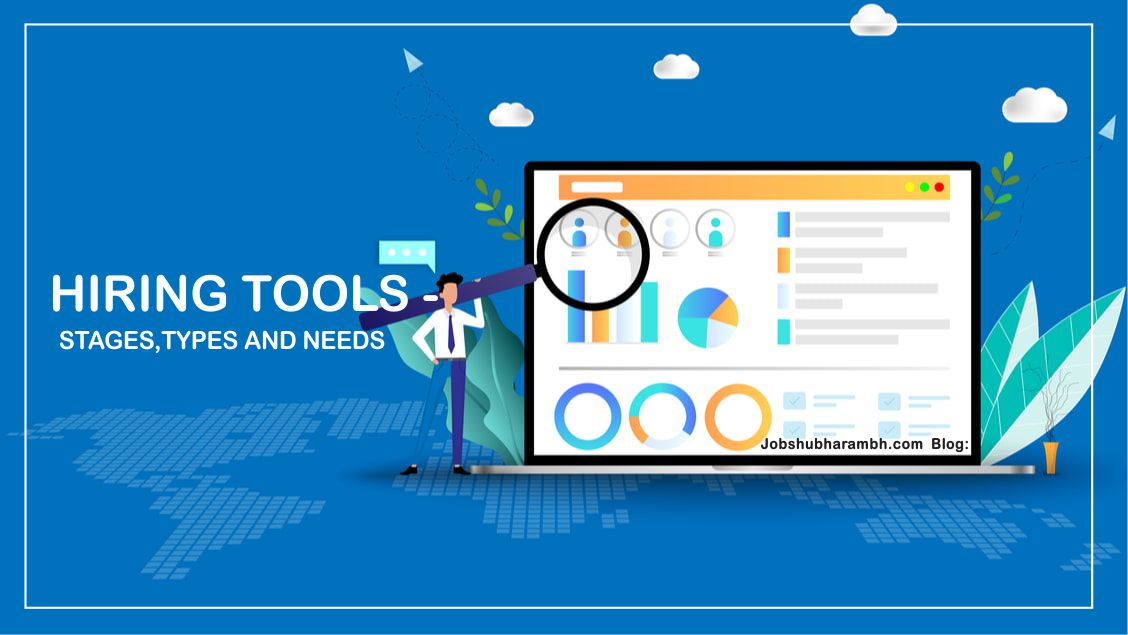Hiring tools refer to various software and technologies that assist organizations in their recruitment and hiring processes. These tools streamline and enhance different stages of the hiring process, making it more efficient, data-driven, and productive.
The stages of hiring typically include:
Sourcing: Sourcing is the initial phase where recruiters and hiring managers search for potential candidates to fill job vacancies. Hiring tools in this stage help identify and attract suitable candidates. Some common sourcing tools include:
- Job Boards: Platforms like Indeed, LinkedIn, and Glassdoor allow companies to post job listings and reach a vast pool of candidates.
-
- Resume Databases: Tools that aggregate resumes and candidate profiles, like Bullhorn Reach and TalentBin, make it easier to search for relevant candidates.
-
Applicant Tracking System (ATS): ATS is a central hub for managing the entire hiring process, from receiving applications to hiring decisions. It streamlines the workflow and ensures candidates are properly tracked. ATS tools include:
- Greenhouse: A popular ATS that helps manage candidate pipelines, schedule interviews, and collaborate with team members.
-
- Workable: An easy-to-use ATS that allows recruiters to post jobs, review resumes, and communicate with candidates.
-
Screening and Assessment: In this stage, candidates are evaluated to determine their suitability for the position. Hiring tools for screening and assessment may include:
- Pre-employment Assessment Platforms: Tools like Criteria Corp and eSkill offer various tests to assess candidates' skills and abilities.
-
- Video Interviewing Software: Platforms like HireVue and Spark Hire enable asynchronous video interviews, saving time and allowing for more flexible scheduling.
-
Interviewing: This stage involves direct interactions with candidates to assess their fit for the role and company culture. Interviewing tools include:
- Virtual Interview Platforms: Tools like Zoom, Microsoft Teams, or specialized platforms like InterviewBuddy facilitate remote and in-person interviews.
-
- Interview Scheduling Software: Tools like Calendly and X.ai simplify the process of setting up interview appointments.
-
Reference Checking: Reference checks involve reaching out to a candidate's previous employers or references to validate their skills and work history. Some hiring tools can automate this process, such as:
- Checkster: A platform that provides automated reference checking and 360-degree feedback.
-
Offer and Onboarding: Tools in this stage facilitate the job offer process and help integrate new employees into the organization. This may include:
- Offer Management Systems: Tools that streamline the job offer creation and approval process, like DocuSign and Adobe Sign.
-
- Onboarding Software: Platforms like BambooHR and Sapling offer onboarding modules to help new hires get acclimated to their roles and the company.
-
The needs for hiring tools vary depending on the organization's size, budget, and specific hiring requirements. Some companies may prioritize advanced screening and assessment tools to identify top candidates efficiently, while others may focus on streamlining their interview process and onboarding experience.
When selecting hiring tools, it's essential to consider factors such as integration with existing systems, ease of use, data security, and scalability to meet future hiring needs. Additionally, it's crucial to ensure that the tools align with the organization's hiring strategy and values to attract and retain the right talent.
Disclaimer
The contents of this blog are provided by a third-party vendor on behalf of Job Shubharambh (OPC) Pvt Ltd . All rights, including copyright, to the content within this blog remain the sole property of Job Shubharambh. The information and opinions expressed in the blog posts are those of the third-party vendor and do not necessarily reflect the views or opinions of Job Shubharambh. While, we strive for accuracy and quality, we do not guarantee the completeness, accuracy, or reliability of the information presented in these blog posts. Readers are encouraged to consult additional sources and exercise their own judgment when interpreting or implementing any information found in this blog. Job Shubharambh is not responsible for any actions taken based on the information provided in these blog posts, and we disclaim any liability for errors, omissions, or consequences arising from the use of this content.
